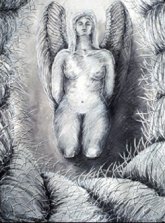





 |
One of our earliest
achievements as thinking, sentient beings, it is said, was made about 3500
B.C. when Mesopotamians replaced the runners of their sleigh-like vehicles
with disk wheels on a fixed axis. We can, with some certainty, trace the
origins of the wheel. Nonetheless, we cannot trace with such certainty our
first use of rope.
The use of a cart on
runners, or sleigh, most certainly involved the use of rope by which beasts
of burden pulled their cargo. Jungle vines, strips of animal hides, and other
found materials surely were used at the very dawning of our consciousness
to bind, to tie, to gather, to transport, to connect, to control, to subdue.
Still, the earliest accounts of the use of rope also come from only about
3500 B.C., when Egyptians began weaving papyrus, hemp, and other fibroid
plants.
Some apes employ
rudimentary tools,such as a lollipop stick, to extract succulent termites
from their mound. I have read many books, spoken with anthropologists, and
raised the issue with friends while sharing a glass of wine, but I have not
been able to learn of any animal, no matter how intelligent, other than human
beings, that uses rope.
I learned how to make
rope; for me, it is a purely meditative process like no other I have known,
approaching the projected altered state of the most immaculate
mantra.
The implications of
rope are sublime, pedestrian, common, noble, sensuous, erotic, sacred, and
profane.
My use of a rope motif,
permeating my work, is an attempt to evoke all of these human proclivities
through the ever-changing yet unchanging image of rope. |